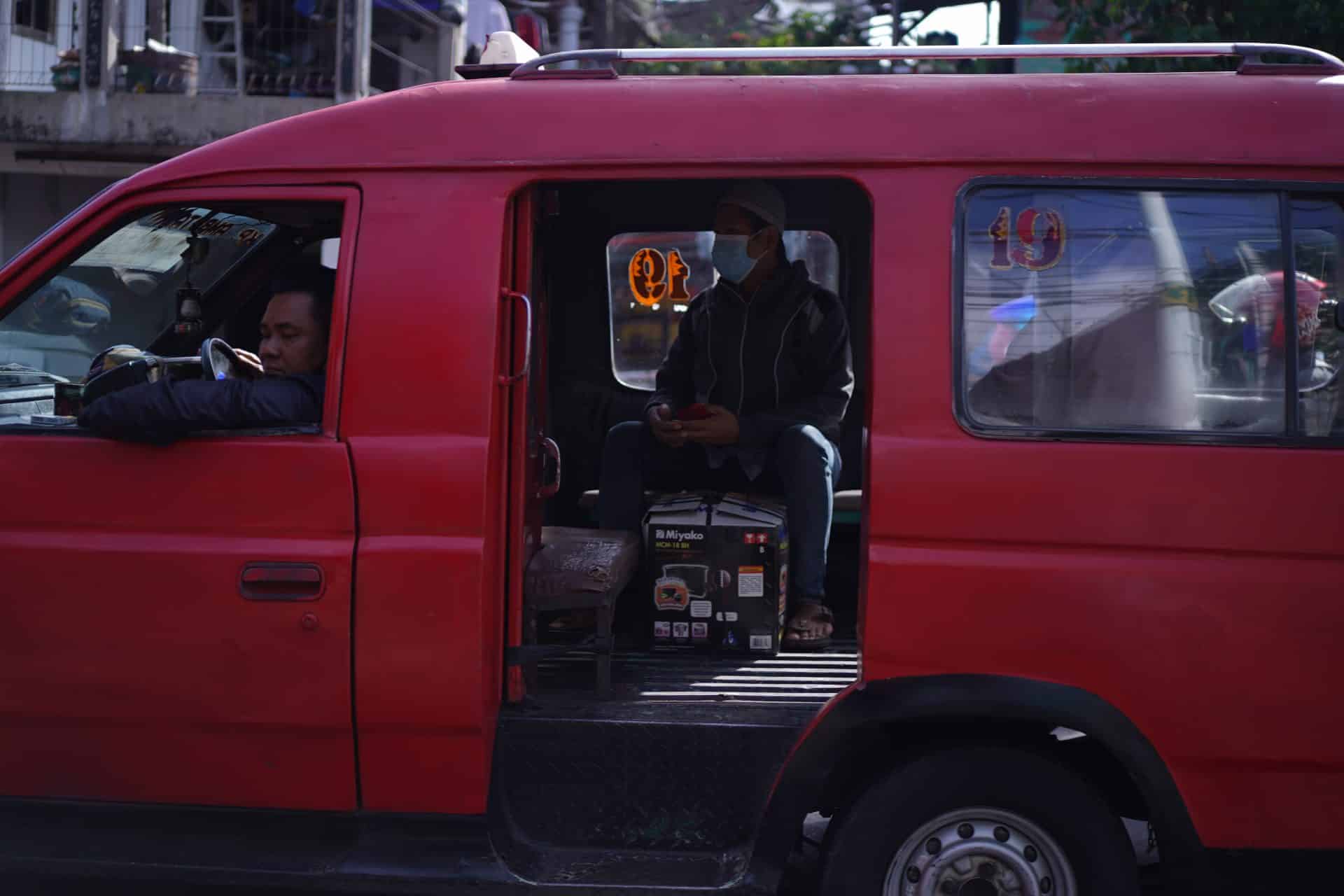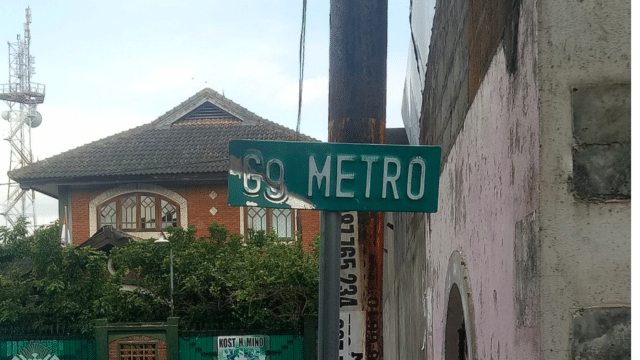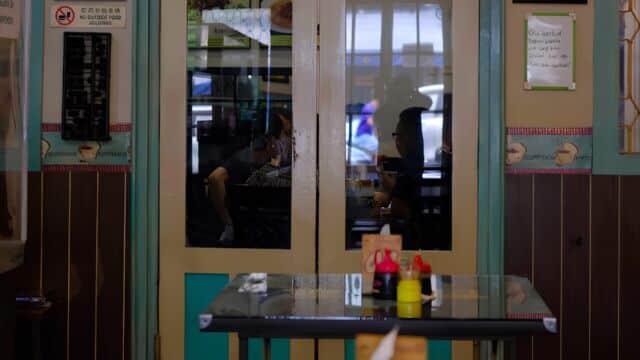Last Angkots of Bekasi
Photo: Achirul Arif Setyawan for This Is Southeast Asia
A dilapidated minibus on the edge of Jakarta | 1200 words | Translated from Bahasa Indonesia by Syarafina Vidyadhana
It seems perfectly normal to brag about the city we grew up in. My friends from Bandung, for one, will not shut up about Tangkuban Perahu, the city parks, the famous Braga Street. And everytime someone mentions Malioboro Street to my friends from Yogyakarta, their eyes light up as they reminisce about what was once there.
Though it seems perfectly normal to take pride in where we came from, the concept remains foreign to me. The thing about my city is, there’s not a lot to brag about. It’s not easy to be proud of something that’s become the butt of so many jokes. “Hell on earth,” I once heard someone describe the heat—although to be fair, the heat is unremitting. “A whole ‘nother planet,” another person has said, referring to the city’s remoteness and alienness. All that shouldn’t mean the city has nothing to offer, I tell myself. After all, the city is home to thousands of people, myself included, a setting to many stories both happy and sad.
Bekasi is one of the several satellite cities adjacent to Jakarta. Known for its strategic location and relatively low living cost, it’s become a preferred residence for workers from all over the country who moved for the promise of a better life.
Bekasi is quite famous, too. No less than Pramoedya Ananta Toer and Chairil Anwar, two Indonesian literary giants, were inspired by the city—so much so that Ananta Toer wrote the novel On the Edge of the Bekasi River and Anwar the poem Karawang-Bekasi. In other words, the city has existed for a long time; it’s real, recognized, and worth talking about. The problem is, things that are worth talking about are not necessarily things of beauty, of greatness. If Bekasi was a stone it wouldn’t be a diamond, or some gemstone of exorbitant value. It would be a small pebble, often overlooked, but never useless. Though it may cause you to stumble.
I first set foot in Bekasi in 2005. A lot has changed since. Sixteen years ago there weren’t as many houses around. Everywhere were rice fields and plantations. I remember hunting eels and looking over lush cucumber gardens. They have now turned into houses made of concrete, ones you can pay off only by slaving away all your life.
Like I said, a lot has changed. Especially since the massive development during the New Order regime. As a satellite city, Bekasi is deeply affected by any change that takes place in the national capital. Our trees have turned to concrete, land has become asphalt, soccer fields have vanished, and even memories are expensive these days.
Not all changes are heartbreaking, I’m aware. The huge mall near the Bekasi Terminal and the extension of the electric railway to Cikarang were definitely happy news. Young people rejoiced because finally there’s a mall in the area that is spacious enough and equipped with a cinema. The working people were relieved because now they could access the electric train more easily. In Tambun, which is where I live, a new underpass—built around the same time as the railway extension—had people gather and take selfies, though the excitement didn’t last for very long.
But after a while the mall was forgotten, and it didn’t take long for the trains to be as packed and suffocating as before. The underpass, which was once the pride of the neighborhood, is now full of graffiti. And it still didn’t fix the traffic.
The angkots are still here, though their numbers are decreasing.
Angkot is a public transportation for short distance travels in the form of a minibus. Of the approximately 3,200 angkot fleets operating in the last ten years, currently only 1,500–2,000 remain. Various factors have contributed to this decline, but one in particular is the rise of ojol, motorcycle taxis ordered through online apps, in recent years.
Nevertheless, angkots persist despite the onslaught of mass transportation initiated by the city government and the ojol. It’s as if to say: some things can’t be crushed by time. And they’re still here in Bekasi even during the pandemic, when most lines of businesses, including the transportation business, are barely surviving. For some people, especially those who can’t be bothered to keep up with technology and prefer a cheaper fare, angkot will always be their first choice of transportation.
As someone who has regularly used various angkots for years, for a while to go to school and now to work, I don’t think it’s an exaggeration to say that angkot is a witness to the times. From inside the angkot we can take mental note of all sorts of changes happening in and to the city.
Through the angkot windows I can see how a stack of bricks quickly turns into a fancy apartment, vacant lands turn into toll roads, and old buildings turn into nothing. Sometimes the windows also work like television, a medium through which I can witness the daily phenomena in Bekasi: the silver person at the red light (you know, that guy who paints his whole body silver, walking from one car to another with a bucket in hand, asking for some change); homeless people on the side of the road; kids selling toilet paper to make ends meet. When the big flood hit Bekasi at the beginning of 2020, the angkot windows also witnessed a row of luxurious and majestic buildings submerged by water.

Even if we close the windows and look inward, there’s still something to see. In the ten years of my traveling with angkot, I can say I’ve seen it all. Stupid things, annoying things, scary things have all happened inside an angkot. I’ve been held up by drunk buskers, pickpocketed by someone pretending to have epilepsy, and suffered an angkot driver who was too fast and, for some reason, too furious.
Everything that happens inside and outside the angkot can pretty much paint a portrait of Bekasi. And what the portrait shows is a city that never tries to smooth out its edges no matter how often it undergoes a makeover.
Poverty, social inequality, the pure chaos that is the Bekasi traffic—you really can see it all from your angkot seat. The story would go on longer if we’re talking about the lives of individual drivers. I’ve met all kinds of drivers, too: honest and kind drivers, drivers who like to take advantage of innocent passengers — such as by charging higher rates to passengers from out of town or who are new in town. Time and again I have also come across angkot drivers who constantly complain about their poor luck — about how their angkots are rarely full or the passengers who didn’t pay the full fare. Once I hopped onto an angkot whose driver was a woman who brought her young child along in the front seat.
Angkot drivers and their passengers are perhaps just ordinary people, people who have only had a minor role in the development of Bekasi. But it’s ordinary people like us that make up the majority of Bekasi. Along with factory workers and low-income laborers, angkot drivers (and their passengers) are the people that make and keep the city alive. From their tears, flesh, and blood, the future of Bekasi will emerge.
A few days ago my father and I had to go to Jakarta, so we took an angkot to the train station. On our way back, getting off from Tambun Station that is constantly being repaired, my father and I walked to where the angkots were parked. We’d normally hop on to the first angkot we saw, but that day the heat was excruciating and my father, wishing to get home as soon as possible, suddenly chose to order an ojol instead.
“I’m too impatient to wait,” my father told me, complaining about the drivers’ common habit to wait until their angkot is full of passengers, which sometimes can take up to 20 minutes, before finally departing. I left the parking area thinking: Will one day angkot be completely forgotten and lost?
I don’t know what will happen in the years to come. What I do know is that changes and developments of the times always come with a risk, and that they slowly deprive us of anything that was ever valuable to our lives.
© Erwin Setia
English translation © Syarafina Vidyadhana






